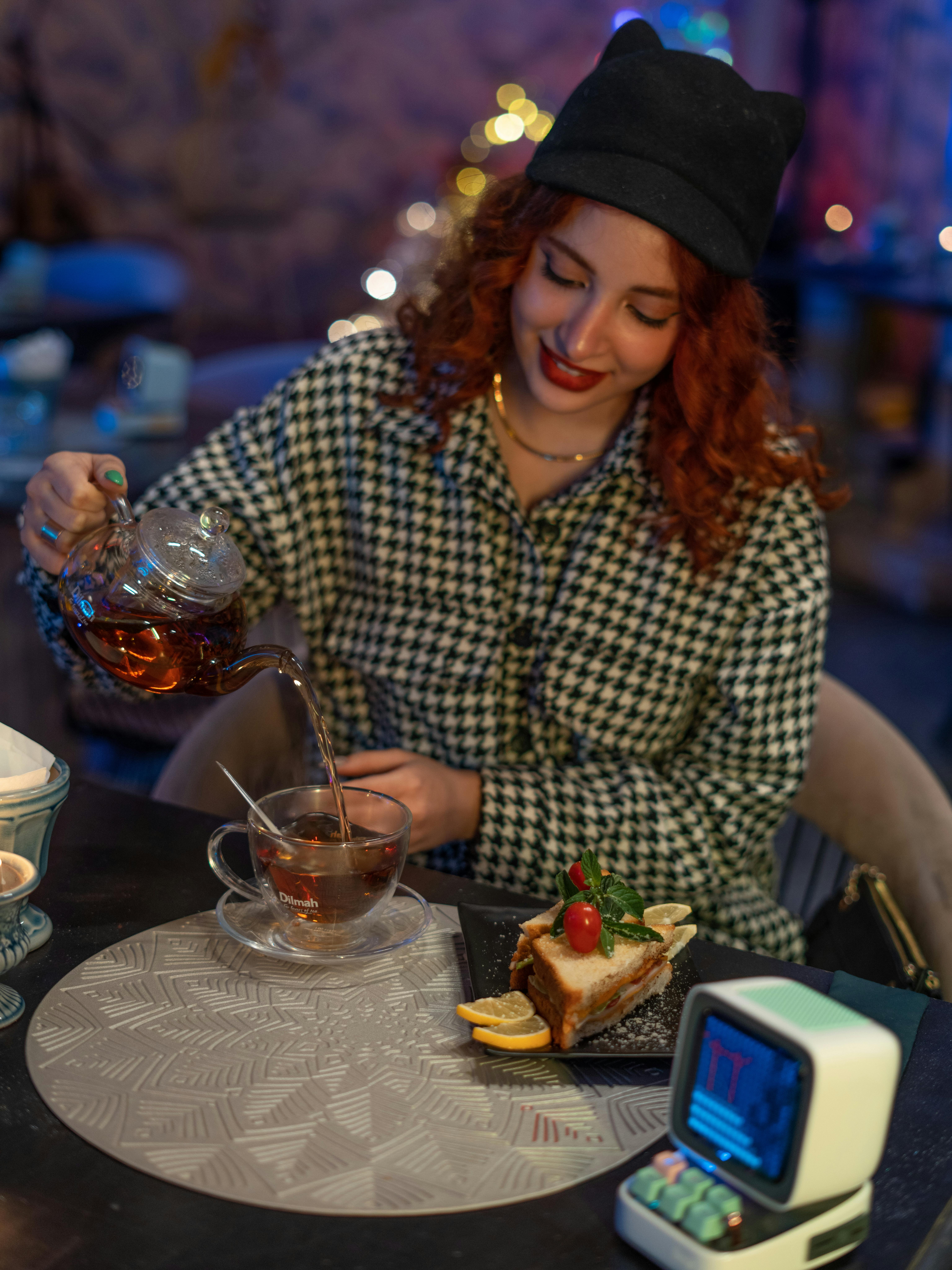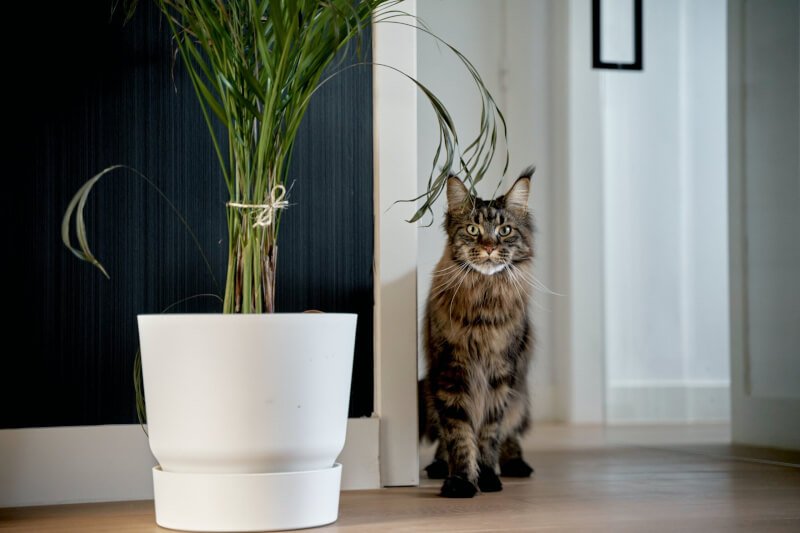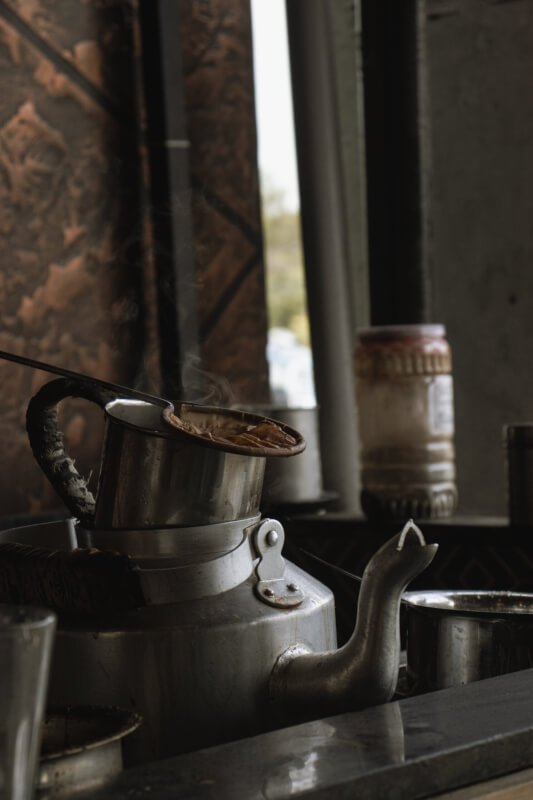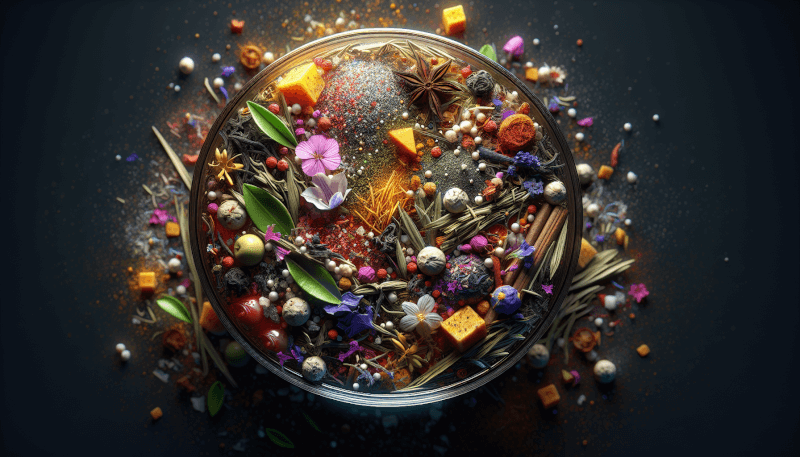Imagine starting your morning with a perfectly blended cup of tea that is tailored specifically to your taste buds. A cup that combines the invigorating notes of mint, the delicate fragrance of lavender, and the smoothness of chamomile. The good news is, you don’t have to be a tea connoisseur or visit a fancy tea shop to create such a blend. With a little creativity and a few simple ingredients, you can easily blend your own specialty tea right at home. Whether you are looking to experiment with unique flavor combinations or simply want to indulge in a personalized tea experience, the world of tea blending is at your fingertips. So grab your apron, get those tea leaves ready, and let’s embark on a journey of creating the perfect cup of tea that truly reflects your individuality.

Choosing the Right Ingredients
Types of Tea
When it comes to blending your own specialty tea at home, the first step is selecting the right types of tea. There is a wide range of options to choose from, including black tea, green tea, white tea, oolong tea, and herbal tea. Each type of tea has its own unique flavor profile and characteristics, allowing you to create a blend that suits your personal preferences. Experimenting with different types of tea is an exciting journey that allows you to discover new flavors and aromas.
Herbs and Spices
To add depth and complexity to your homemade tea blends, consider incorporating herbs and spices. There is an endless array of options to choose from, such as mint, chamomile, lavender, cinnamon, ginger, and cardamom. These ingredients can provide a refreshing or soothing effect, depending on your desired flavor profile. Experiment with different combinations and ratios to achieve the perfect balance of flavors.
Fruits and Flowers
Adding fruits and flowers to your tea blends can introduce a delightful sweetness and aroma. Consider using dried fruits like berries, oranges, or apples to add a natural sweetness. Edible flowers such as rose petals, jasmine, or hibiscus can elevate the visual appeal of your blend while adding a unique and fragrant touch. Be adventurous and explore different flavors that complement your chosen tea base.
Sweeteners and Enhancers
To enhance the flavor of your specialty tea blends, you may want to add sweeteners or enhancers. Honey, agave syrup, or stevia are popular natural sweeteners that can provide a touch of sweetness without overpowering the overall taste. Enhancers like lemon zest, vanilla extract, or cocoa nibs can add a subtle yet distinctive twist to your blend. Remember to use these ingredients sparingly and taste as you go, to achieve the desired balance of flavors.
Equipment for Blending
Tea Infuser or Strainer
A tea infuser or strainer is a must-have tool for blending your own specialty tea at home. It allows you to steep your tea leaves or herbs without them floating freely in your cup or teapot. Choose a high-quality infuser or strainer that suits your preferred brewing method, whether it’s a fine mesh capsule, a ball-shaped infuser, or a versatile strainer that fits directly into your teapot.
Teapot or Teacup
Having a dedicated teapot or teacup for blending your specialty tea can enhance your tea blending experience. A teapot offers more control over the brewing process and allows flavors to develop more harmoniously. Teacups with built-in infusers are also a convenient option for steeping single servings of your homemade blends. Choose teaware that suits your personal style and brewing preferences.
Mortar and Pestle
A mortar and pestle is a versatile tool that can be used for crushing or grinding herbs, spices, or dried fruits. It allows you to release the essential oils and flavors from your ingredients, resulting in a more robust and aromatic blend. Choose a sturdy and well-made mortar and pestle that can withstand repeated use and provide a smooth grinding experience.
Scales or Measuring Spoons
Accurate measurement is crucial when it comes to blending your own specialty tea. Scales or measuring spoons enable you to achieve consistency in the amount of tea leaves, herbs, or spices you use. This ensures that your blends are balanced and flavorful. Invest in a reliable set of scales or measuring spoons to improve your precision and achieve the desired taste in every cup.

Understanding Flavor Profiles
Balancing Bitterness and Astringency
When creating your own tea blend, it’s important to understand the balance between bitterness and astringency. Bitterness refers to the taste that comes from compounds found naturally in teas, while astringency is the drying or puckering sensation caused by tannins. Finding the right balance of these elements will result in a smooth and enjoyable cup of tea. Experiment with steeping times and ratios to achieve a harmonious blend that suits your taste preferences.
Exploring Aromas and Scents
Aroma plays a significant role in the overall enjoyment of a tea blend. Use your sense of smell to explore the different aromas and scents that various herbs, spices, fruits, and flowers bring to a blend. Take note of the strong and subtle notes and experiment with combining different ingredients to create a unique aroma profile. The aromatic experience of your homemade tea blend will greatly enhance your overall tea-drinking experience.
Creating Unique Flavors
Blending your own specialty tea at home gives you the creative freedom to create unique and intriguing flavors. Think outside the box and experiment with unexpected combinations of ingredients. For a refreshing twist, try adding citrus zest to your blend. To create a cozy and comforting flavor, experiment with warm spices like cinnamon and nutmeg. Allow your creativity to flourish and don’t be afraid to try new and unconventional flavor combinations.
Experimenting with Tea Blends
Single-Ingredient Blends
A great way to start your tea blending journey is by creating single-ingredient blends. This allows you to fully appreciate the unique characteristics of each ingredient and understand how it affects the overall taste. For example, start by experimenting with a single herb or spice, such as peppermint or lavender, and observe how it changes the flavor profile of your tea. This simple yet effective approach will allow you to develop a deeper understanding of each ingredient and its role in a blend.
Combining Different Tea Types
Combining different types of tea is another exciting way to create your own specialty blends. For example, blending black tea with green tea can result in a unique flavor profile that combines the robustness of black tea with the vegetal notes of green tea. Be adventurous and experiment with different tea combinations to find the perfect balance and create a blend that is truly your own.
Creating Herbal Infusions
Herbal infusions offer endless possibilities for creating caffeine-free tea blends. Experiment with various herbs such as chamomile, peppermint, or lemongrass, and combine them with fruits, flowers, or spices to create invigorating and soothing infusions. These blends can be enjoyed at any time of the day and can provide numerous health benefits. Let your imagination run wild and create herbal infusions that cater to your specific taste and preferences.

Storing and Aging Blends
Proper Storage Techniques
To ensure the longevity and freshness of your homemade tea blends, it is important to store them properly. Keep your blends in airtight containers, away from direct sunlight, heat, and moisture. Glass jars with tight-fitting lids are ideal for storing tea blends as they prevent air and light from degrading the quality of the tea. Taking these simple storage precautions will help maintain the flavors and aromas of your blends over time.
Factors for Aging Tea
Some tea enthusiasts prefer aging their tea blends as it can enhance the flavors and develop unique characteristics. Factors that contribute to the aging process include the type of tea leaves and ingredients used, as well as the storage conditions. Generally, high-quality teas like pu-erh and oolong benefit from aging, while delicate teas like green tea are best enjoyed fresh. Experimentation and tasting over time will allow you to determine what aging methods work best for your blends.
Monitoring and Tasting over Time
Aging tea blends requires patience and the willingness to monitor and taste your blends over time. Regularly check on the aroma, flavor, and overall quality of your aged tea blends to ensure they are developing in the desired direction. Keep notes and compare them with the original taste profile to track the changes that occur as your blends age. This process can be both fascinating and rewarding, as you witness the transformation of your blends.
Considering Health Benefits
Researching Herbal Properties
Blending your own specialty tea at home not only allows you to create unique flavors but also provides an opportunity to explore the health benefits of different herbs and spices. Research the properties of various ingredients and their potential effects on overall well-being. For example, chamomile is known for its calming properties, while ginger is believed to aid digestion. By incorporating herbs with specific health benefits into your blends, you can enjoy a cup of tea that not only tastes great but also supports your well-being.
Targeting Specific Health Issues
Certain herbs and spices have been traditionally used to address specific health issues. For example, peppermint is known for its soothing effect on the digestive system, while hibiscus is believed to help lower blood pressure. By blending your own tea with these targeted health benefits in mind, you can tailor your teas to address specific concerns and promote overall wellness. However, always consult with a healthcare professional before relying solely on herbal remedies for specific health issues.
Seeking Professional Advice
If you have specific health concerns or are unsure about blending herbal teas, it is always a good idea to seek professional advice. Herbalists and tea experts can provide guidance on selecting the right ingredients and creating blends that promote health and well-being. They can also offer insights into the proper usage and potential interactions of different herbs and spices. Consulting with professionals ensures that you make informed decisions regarding your tea blends and their potential health benefits.
Labeling and Packaging
Designing Your Labels
When it comes to labeling your homemade tea blends, creativity is key. Design labels that reflect your personal style and the unique characteristics of your blends. Include the name of the blend, the ingredients used, and any specific brewing instructions or recommendations. You can handwrite labels for a personal touch or use templates for a more polished look. Regardless of your chosen style, clear and informative labels will enhance the overall presentation of your tea blends.
Choosing Packaging Materials
Packaging plays a crucial role in preserving the freshness and quality of your homemade tea blends. Air-tight and moisture-resistant containers are essential to protect your blends from exposure to external elements. Glass jars with tight-fitting lids and resealable bags are popular options for packaging tea blends. Consider using eco-friendly materials whenever possible, such as reusable tins or biodegradable tea bags, to reduce waste and promote sustainability.
Including Brewing Instructions
To ensure that others can enjoy your specialty tea blends to their fullest, include brewing instructions on your packaging. Clearly describe the optimal steeping time, water temperature, and tea-to-water ratio for each blend. This information will help recipients of your tea blends achieve the best possible flavor and aroma when brewing. Offering detailed brewing instructions shows that you value the experience of the tea drinker and enhances their enjoyment of your blends.
Sharing and Gift-Giving
Presenting Tea Blends as Gifts
Blending your own specialty tea at home provides a wonderful opportunity to share your passion and creativity with others. Presenting your tea blends as gifts can delight your loved ones, allowing them to experience the unique flavors you have crafted. Package your blends in beautiful containers, accompanied by personalized labels and brewing instructions. Consider pairing your tea blends with tea accessories such as a tea infuser or a decorative teacup, making the gift even more special.
Exploring Tea Swap Communities
Tea swap communities are a great platform for tea enthusiasts to share and exchange their homemade tea blends. Joining these communities can provide an opportunity to connect with like-minded individuals and explore a wide variety of unique teas. Participating in tea swaps allows you to receive new and exciting blends in return for sharing your own creations. These communities foster a culture of exploration, creativity, and generosity, where you can learn, grow, and expand your tea collection.
Building Your Tea Collection
Blending your own specialty tea at home opens up a world of possibilities and encourages the development of a diverse tea collection. As you experiment with different ingredients and flavor combinations, your tea collection will grow in both variety and uniqueness. Having a wide range of tea blends allows you to cater to different moods and occasions, ensuring that there is always a blend available to suit your preferences. Building your tea collection is an ongoing journey that brings joy, creativity, and discovery.
Exploring Cultural Influences
Traditional Tea Blends
Exploring cultural influences is an exciting way to expand your tea blending repertoire. Traditional tea blends from different regions offer a wealth of inspiration for creating unique and authentic flavors. For example, matcha from Japan and chai from India have distinct flavor profiles and preparation methods that can be adapted and incorporated into your own blends. Research traditional tea blends from various cultures, understand their ingredients and techniques, and infuse these flavors into your homemade blends.
Adapting Recipes from Different Cultures
Adapting recipes from different cultures allows you to create fusion blends that celebrate diversity and cross-cultural influences. Experiment with combining ingredients and techniques from various tea traditions to develop innovative and harmonious flavors. For example, blend Japanese sencha with Moroccan mint to create a refreshing and aromatic infusion. Embrace the flavors and techniques from around the world, and let your tea blends be a reflection of cultural fusion and appreciation.
Honoring Tea Rituals
Tea rituals hold significant cultural and historical value and can enhance the overall tea-drinking experience. Incorporate elements of tea rituals from different cultures into your blending routine to deepen your connection with the art of tea. This may include specific brewing methods, utensils, or accompanying snacks. Honoring tea rituals allows you to pay homage to the rich heritage of tea and immerse yourself in its timeless traditions.
Benefits of Blending Your Own Tea
Customizing Flavor and Strength
One of the most significant benefits of blending your own specialty tea at home is the ability to customize flavor and strength according to your personal preferences. You have full control over the ingredients and ratios, allowing you to create tea blends that perfectly suit your taste. Whether you prefer a bold and robust infusion or a delicate and floral tea, blending your own tea ensures that every cup is tailored to your liking.
Controlling Ingredients and Quality
Blending your own specialty tea gives you the freedom to select high-quality ingredients and control the overall quality of your tea. You can handpick fresh herbs, spices, and tea leaves, ensuring that each component of your blend meets your desired standards. This control over the ingredients and quality guarantees a superior tea-drinking experience, as you can be confident in the purity and freshness of your homemade blends.
Promoting Creativity and Relaxation
Blending your own tea is a creative and relaxing activity that allows you to express your individuality. The process of experimenting with different ingredients, aromas, and flavors is both stimulating and therapeutic. Blending tea encourages mindfulness and provides a much-needed break from the busyness of daily life. By actively engaging in the art of tea blending, you can promote creativity, relaxation, and overall well-being.
In conclusion, blending your own specialty tea at home is a rewarding and enjoyable endeavor. By choosing the right ingredients, understanding flavor profiles, experimenting with different blends, and considering health benefits, you can create unique tea blends that cater to your preferences and promote overall well-being. With the right equipment, storage techniques, packaging, and a sense of creativity, you can share your passion for tea with others and explore the rich cultural influences that tea brings. Blending your own tea empowers you to customize flavor and quality, while promoting creativity and relaxation. So go ahead, embark on this tea blending adventure and unlock a world of flavor and possibility!


